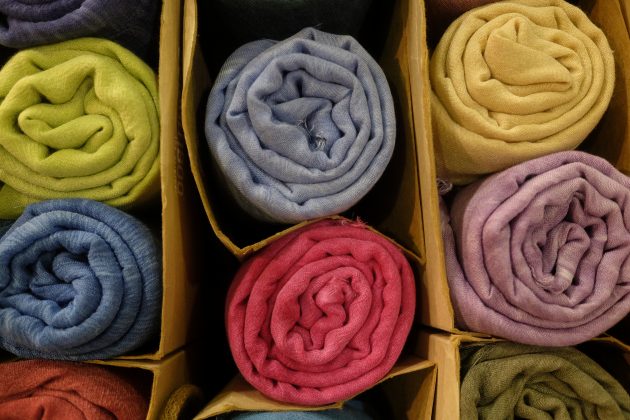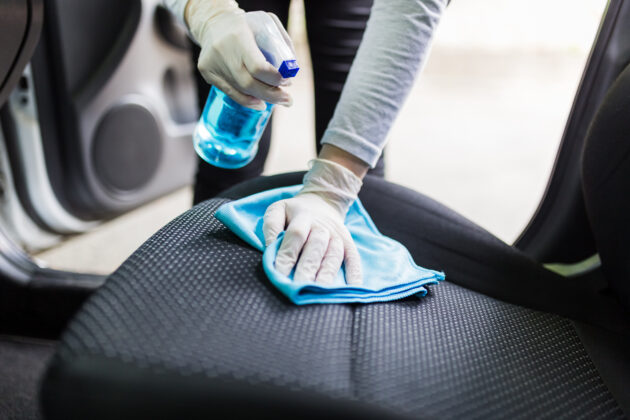Because of the COVID-19 pandemic, people are now becoming more aware of the importance of healthcare. Gestures that were considered ‘extra’ before, such as wearing masks are now a requirement and have gone normalized both as a personal protective equipment or PPE, and as a fashion statement.

Since being protected from a number of bacteria and viruses have never been this important, a lot of companies and businesses took it as a marketing opportunity where they can offer quality, with an extra layer of protection. And thus, the return of the antimicrobial fabric craze.
Truth be told, these antimicrobial textiles have been existing for decades now. Mostly used by healthcare facilities for scrubs, wound dressing, masks, and other health-related equipment. But the demand for this biotextile has seen an increase since the pandemic started.
Many could be said about this textile but the glaring question is, can antimicrobial fabric protect you from diseases?
Microbiota For Dummies
Before you try to get to know the unsung hero of this story, you must first be introduced to the villains of this quest namely, virus, bacteria, and fungi.
Fully understanding these three microorganisms would probably take a lifetime and a half. That doesn’t include yet their mode of transmission, their structure, and a lot more. This said, one thing that you can know right now is that these microorganisms may not all be bad, especially with human intervention.
To start off, viruses behave like the tiniest USB drives of nature. They contain data that when inserted to a living host, they hack and overtake the cell of the host they infected. Viruses are enclosed in a protein casing and inside is just genetic material.
The immune system is built to fight off these foreign invaders, but in cases where the immune system fails, the person becomes sick. This implies, that without living hosts, these viruses will die. On the other hand, bacteria and fungi can ‘live’ even without a host. Look at these examples to know more.
Antimicrobial Fabric: How Do They Work?
In relation to the microbiomes above, antimicrobial fabrics inhibit their growth through attacking their means of reproduction, as well as targeting the very cell of these pathogens. Depending on the material used, some antimicrobial fabrics can just hinder growth, while others can immediately ‘kill’ them on contact.
The materials used in these fabrics vary from chitosan, silver, zinc, and copper. Chitosan is more preferred, because of its sustainability and eco-friendliness, over the three. However, some manufacturers treat chitosan fibers with zinc and copper to achieve the maximum efficiency of the three materials.
Silver, especially nanoscale silvers, have been found to be toxic to humans and the environment. Because of their nanoscopic size, these particles can easily seep into human skin or onto different bodies of water when these fabrics are washed. Despite their antimicrobial properties, silver has seen a decrease in demand because of this.
And now the groundwork has been laid, can antimicrobial fabric protect you from diseases? The quick answer is a yes and no.

Antimicrobial Fabrics: How Effective Are They?
To elaborate, the term disease is a complex concept. Different diseases have different modes of transmission, as well as the microbiomes that caused them in the first place. Without a living host, viruses won’t thrive. By simply removing a host from the equation, viruses can’t multiply.
In the same fashion, antimicrobial fabrics do not completely eradicate, neither do they offer a complete protection from diseases. So, to assume that they can protect you from diseases is, at best, a misconception, but it doesn’t mean that they’re completely impractical and useless.
In reality, humans come in contact with a lot of things. Doorknobs, telephones, mobile phones, bus tickets, paper bills, and the list goes on. Same goes with the clothes they wear. Clothing comes in contact with surfaces that may very well be festering with pathogens.
And since antimicrobial fabrics don’t let these microorganisms see the light of day, it decreases the likelihood of sheltering an infestation that could lead to you being infected with something else.
This is why antimicrobial fabrics work best at healthcare facilities where bloodborne and airborne pathogens thrive. According to the data released by the Center for Disease and Control Prevention or CDC, 1 in 31 patients get infected of healthcare-associated infections or HAI.
Simply, this means that the likelihood of contracting diseases in hospitals is relatively high. To mitigate this, hospitals have been using antimicrobial fabrics in their most of their textiles such as linen, scrubs, and a lot more. If you’re interested, you can create your own mask using antimicrobial fabrics through this step-by-step guide.
The Final Verdict
Antimicrobial fabrics can help protect you from certain diseases, but they can’t completely eliminate pathogenic microorganisms. These biotextiles should only serve as an additional layer of protection, and not a one-size-fit-all solution to help yourself from being infected. Proper hygiene and following healthcare protocols must still be observed.